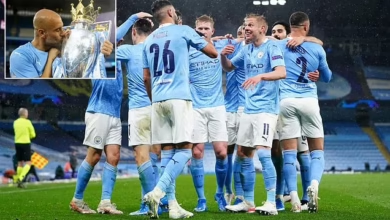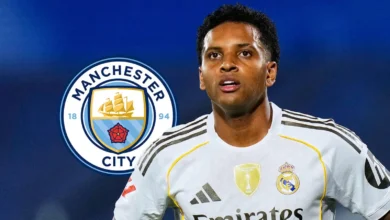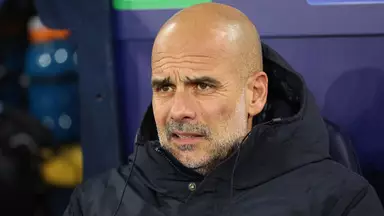Liverpool’s Pursuit of Giovanni Leoni: A Comprehensive Analysis of the Emerging Transfer Saga

The summer transfer window of 2025 has proven to be a fascinating period for Liverpool Football Club, with the Reds demonstrating their commitment to building a squad capable of competing at the highest level under the guidance of manager Arne Slot. Among the various transfer targets that have emerged throughout the window, one name has consistently captured the attention of both media and supporters alike: Giovanni Leoni, the 18-year-old defensive prodigy currently plying his trade with Serie A side Parma.
What began as speculative interest from Liverpool has rapidly evolved into a concrete pursuit, with multiple Italian journalists reporting significant developments in recent weeks. The story of Liverpool’s chase for Leoni represents more than just another transfer saga; it embodies the club’s strategic approach to long-term squad building, their willingness to invest in young talent, and their ability to move decisively in a competitive market.
Giovanni Leoni represents the modern archetype of a center-back that top clubs across Europe are desperately seeking. At just 18 years of age, the Italian defender has already demonstrated maturity and composure that belies his youth, catching the attention of scouts from some of the continent’s most prestigious clubs. His emergence in Serie A with Parma has been nothing short of remarkable, showcasing the technical ability, physical presence, and tactical awareness that have become synonymous with Italian defensive excellence.
The young defender’s playing style combines the traditional Italian defensive virtues of positioning and tactical intelligence with the modern requirements of pace, distribution, and comfort on the ball. These attributes make him an ideal fit for Liverpool’s system under Arne Slot, where center-backs are expected to contribute significantly to the team’s build-up play while maintaining defensive solidity.
Leoni’s rapid rise through the ranks at Parma has been meteoric. His ability to read the game, coupled with his impressive physical attributes, has seen him establish himself as a regular in the first team despite his tender age. This progression has not gone unnoticed by Europe’s elite clubs, with Liverpool emerging as the most serious suitors for his signature.
The financial aspects of Liverpool’s pursuit of Leoni reveal much about the club’s current transfer strategy and their assessment of the player’s potential. Reports suggest that the Reds are prepared to invest €40 million in securing the defender’s services, a figure that represents a significant commitment to a player who is still in the early stages of his professional career.
This willingness to invest substantial funds in young talent aligns with Liverpool’s broader transfer philosophy under the current ownership structure. The club has consistently demonstrated their belief in identifying promising players before they reach their peak market value, a strategy that has served them well in previous transfewindows.
The proposed financial structure of the deal, as reported by Italian media outlets, suggests a base fee of €30 million plus an additional €5 million in performance-related bonuses. This arrangement would satisfy Parma’s valuation while providing Liverpool with some protection through the bonus structure, ensuring that the full investment is only realized if the player meets certain predetermined criteria.
From Parma’s perspective, the financial package represents an extraordinary windfall for a club operating in Serie A’s competitive but financially challenging environment. The potential transfer fee would provide them with significant resources to strengthen their squad while also representing a substantial profit on their investment in developing Leoni’s talents
The transfer market rarely operates in isolation, and Liverpool’s pursuit of Leoni has been complicated by interest from other top European clubs. Tottenham Hotspur has emerged as a significant rival in the race for the defender’s signature, creating a competitive dynamic that has forced Liverpool to accelerate their pursuit.
This competition has added urgency to Liverpool’s approach, with reports suggesting that the club has decided to “speed up the process” to avoid missing out on their target. The presence of multiple suitors for Leoni’s services has created a seller’s market for Parma, potentially driving up the transfer fee while also providing the player with multiple attractive options for his next career move.
Tottenham’s interest in Leoni represents a significant challenge for Liverpool, as the North London club can offer immediate first-team opportunities and a project that might appeal to a young player eager to establish himself in one of Europe’s top leagues. However, Liverpool’s status as recent Premier League champions and their track record of developing young talent provide them with distinct advantages in any head-to-head competition.
The competitive element has also influenced the timeline of potential negotiations, with reports suggesting that decisive developments could occur within hours rather than days. This compressed timeframe reflects the modern transfer market’s fast-paced nature, where clubs must be prepared to move quickly to secure their targets.
The Italian media’s extensive coverage of Liverpool’s interest in Leoni has provided fascinating insights into how modern transfer negotiations unfold. Multiple respected journalists, including Eleonora Trotta, Orazio Accomando, and Gianluca Di Marzio, have reported various aspects of the developing story, each adding layers of detail to the overall narrative.
Eleonora Trotta’s initial report of Liverpool’s €40 million willingness to invest established the financial parameters of the potential deal. This figure immediately caught attention as it exceeded Parma’s reported asking price, suggesting that Liverpool were serious about securing the player’s services without engaging in prolonged negotiations.
Orazio Accomando’s subsequent reporting added the competitive element, revealing Liverpool’s decision to accelerate their pursuit in response to interest from Tottenham and other clubs. This development transformed what might have been a leisurely negotiation into a more urgent pursuit, with time becoming a critical factor.
Gianluca Di Marzio’s contribution to the coverage has been perhaps the most significant, with his reports of Liverpool having “conditions in place to close the deal” suggesting that negotiations have progressed beyond initial expressions of interest. His indication that developments could occur within “the next few hours” has created a sense of imminent resolution to the transfer saga.
Liverpool’s pursuit of Leoni must be understood within the context of their broader strategic planning and squad development objectives. The club’s interest in an 18-year-old defender represents a clear investment in the future, suggesting confidence in both the player’s potential and the club’s ability to develop young talent.
The timing of this potential acquisition is particularly interesting given Liverpool’s current defensive options and the age profile of their existing center-backs. The addition of Leoni would provide both immediate depth and long-term security in a crucial position, allowing the club to manage the transitions that naturally occur as players age and careers evolve.
From a tactical perspective, Leoni’s profile appears well-suited to the demands of playing in Arne Slot’s system. The manager’s approach requires defenders who are comfortable in possession, capable of accurate distribution, and able to contribute to the team’s attacking phases when required. These attributes align closely with Leoni’s demonstrated capabilities, suggesting that the pursuit is based on careful tactical analysis rather than opportunistic speculation.
The potential loan-back arrangement mentioned in some reports adds another layer of strategic thinking to the proposed deal. Such an arrangement would allow Liverpool to secure Leoni’s future while providing him with continued opportunities to develop in a familiar environment. This approach has proven successful for many clubs in recent years, allowing young players to mature without the immediate pressure of performing at the highest level.
Liverpool’s historical success in developing young players adds credibility to their pursuit of Leoni and may provide them with a competitive advantage in negotiations. The club’s track record of integrating promising defenders into their first team, combined with their reputation for providing appropriate development opportunities, makes them an attractive destination for emerging talent.
The proposed loan-back arrangement represents a sophisticated approach to talent development that acknowledges the benefits of allowing young players to continue their growth in familiar surroundings. This strategy recognizes that immediate integration into a top-level squad is not always the optimal path for player development, particularly for teenagers making the transition to elite football.
Should the loan-back arrangement materialize, it would create what reports describe as a “win-win situation” for all parties involved. Parma would retain the services of their star defender for another season while also securing a significant transfer fee. Liverpool would secure their long-term target while avoiding the immediate pressure of integrating a young player into their squad. Most importantly, Leoni would continue his development in an environment where he has already proven successful.
This approach reflects modern football’s increasing sophistication in managing young talent, recognizing that the pathway to success is not always linear and that patience can be crucial in maximizing a player’s potential.
The financial aspects of the proposed Leoni transfer reflect broader trends in the modern transfer market, where clubs are increasingly willing to invest substantial sums in young players who demonstrate exceptional potential. The €40 million figure mentioned in reports represents a significant investment for any club, but it also reflects the premium that top teams are willing to pay for promising talent.
From an economic perspective, the investment in Leoni could prove highly beneficial for Liverpool if the player fulfills his potential. Young players who successfully establish themselves at elite clubs often see their market value appreciate significantly, providing both sporting and financial returns on the initial investment.
The bonus structure reportedly included in the deal terms provides additional insight into how modern transfers are structured to manage risk while incentivizing performance. By including performance-related bonuses, Liverpool can ensure that the full financial commitment is only realized if Leoni meets specific criteria, protecting the club’s investment while providing Parma with the potential for additional revenue
The compressed timeline reportedly surrounding the Leoni transfer reflects the reality of modern football negotiations, where decisions often must be made rapidly to avoid missing out on targets. Reports suggesting that developments could occur within “the next few hours” create a sense of urgency that is characteristic of high-profile transfer situations.
This accelerated timeline has been driven partly by competitive pressure from other interested clubs, particularly Tottenham Hotspur. The presence of multiple serious suitors has created a situation where delay could be costly, forcing Liverpool to move more quickly than they might prefer in ideal circumstances.
The urgency also reflects practical considerations related to the transfer window timeline and the need to complete deals in time for proper integration into squad planning. With the new season already underway, any delay in completing transfers can impact a club’s ability to properly prepare new signings for their upcoming challenges.
Liverpool’s pursuit of Giovanni Leoni represents more than just another transfer story; it embodies the club’s strategic approach to squad building and their commitment to maintaining competitiveness at the highest level. The willingness to invest €40 million in an 18-year-old defender demonstrates confidence in both the player’s ability and the club’s capacity to develop young talent.
The various elements of this transfer saga – from the financial commitment to the competitive dynamics with other clubs, from the strategic implications to the development pathway – illustrate the comp














